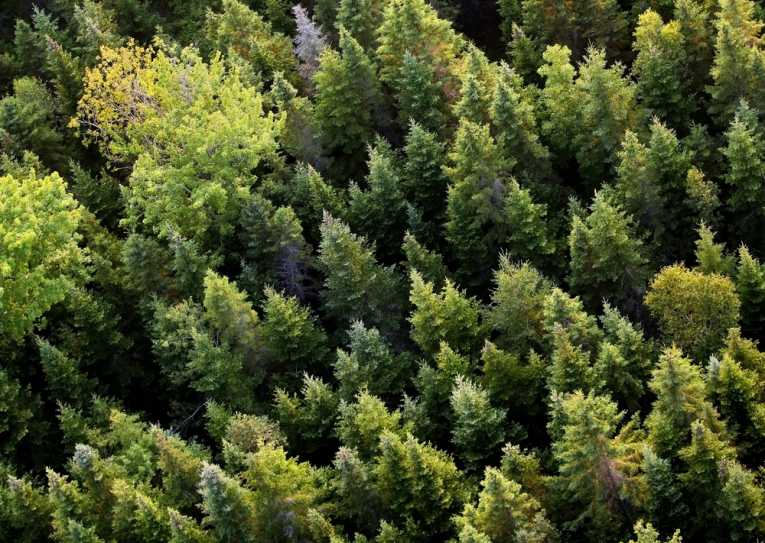The forests are changing . Due to climate changes caused by global warming, insect attacks, fires and diseases, a massive migration of trees is underway. While many trees native to certain Western areas are on the brink of extinction, new species are moving in- tree species who are able to adapt to the climate changes, unlike their ancient counterparts.
In New England this year, the trees failed to go through their normally brilliant, colorful Fall transformations. This was due to a variety of factors: the recent leaf damage caused by Hurricane Irene, in addition to an unusually warm yet wet Autumn. The change in climate prevented the trees from receiving the signal to stop producing chlorophyll, the green pigment behind the process of photosynthesis. This caused the leaves to stay green; in fact, some were even budding late into the season, growing new green leaves when the old leaves should have been turning red, orange or gold. Increasingly wet weather also caused the outbreak of a leaf fungus known as anthracnose, which causes leaves to skip the colorful foliage step and go directly to brown.
Many trees which once flourished in their existing climates are expected to die out or thin out immensely. New species are expected to move in to replace the dying giants. A recent report outlines how scientists believe the swiftly changing climate will impact existing tree species ability to thrive in various environments. Once common species (such as the lodgepole pine) are losing their footholds and are being overwhelmed by competitive newcomers (such as ponderosa pine or Douglas-fir). Still researchers suspect that some areas may experience a complete extinction of tree-life, transforming once lush, thriving forests into bare deserts, savannahs or grasslands.
This means that many tree populations are in danger of extinction, due to their inability to evolve with their natural habitat. Trees endure in certain areas due to their ability to adapt to that specific environment, which includes temperature, cold-tolerance and a variety of other factors. As climate conditions are subject to change, tree species that have reigned in particular areas for centuries, possibly even millennia, will slowly decline and disappear.

Cedar forest via Shutterstock
While it's not unusual for ecosystems to change, typically the rate of change is so slow that humans are unable to notice it. Although the rate of change is now fast enough that we can observe it, the composition of the forests won't be completely changing anytime soon. It'll be many years, centuries perhaps, before the transformation of the forests are in full effect.
So what can we do about this? Sadly, there is not much we can do. Climate change is a natural part of life on this planet, as well as plants' ability to adapt and evolve with the changing climate. We can try to prolong the inevitable all we want, but the fact of the matter is, all we're really able to do is sit behind our garage doors and wait.










